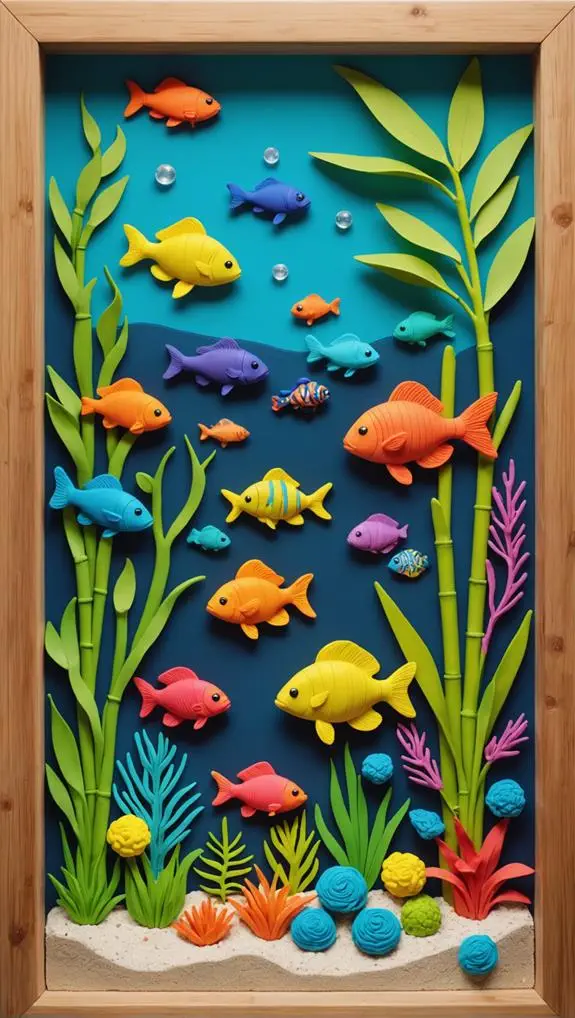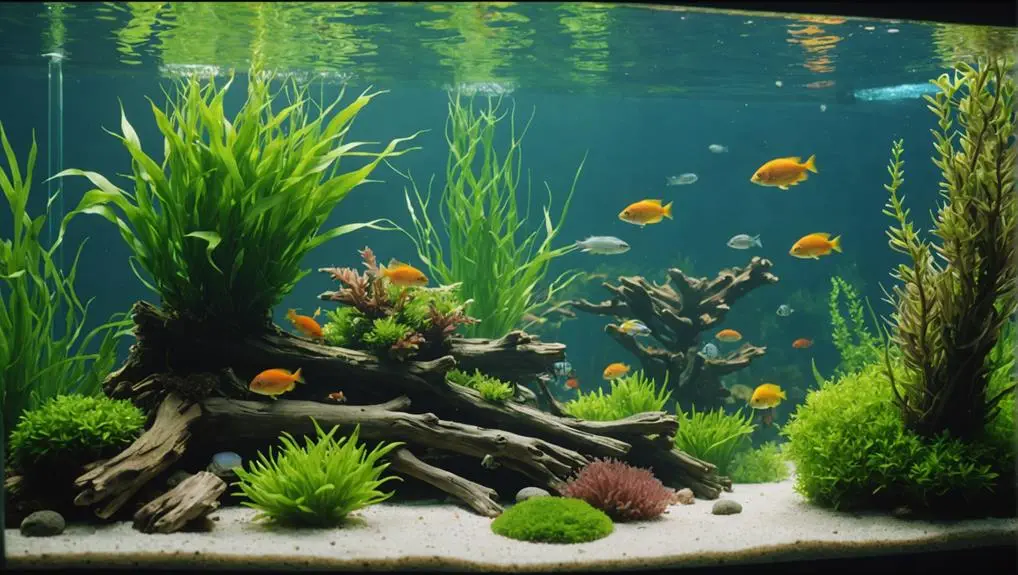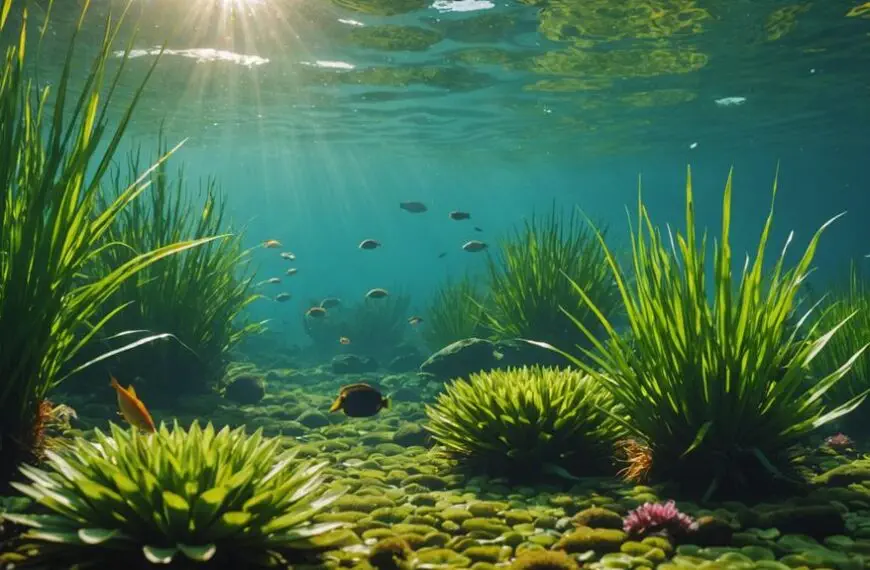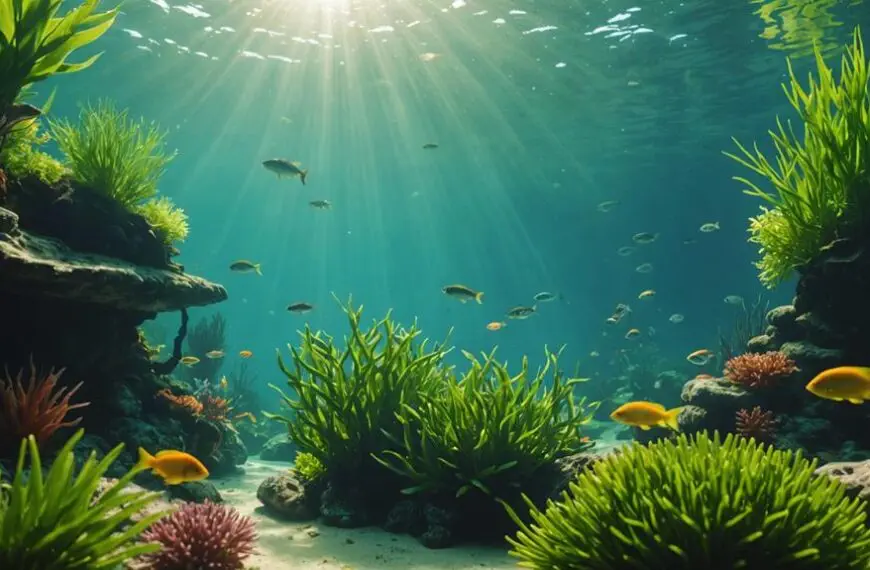Maintaining an eco-friendly fish tank is easier than you might think! First, optimize your filtration system for cleaner water and to reduce waste. Then, consider adding algae-eating buddies like cherry shrimp; they're colorful and help with cleaning! You might also want to explore aquaponics, where fish and plants work together—it's like nature's own team-up! Don't forget to monitor water quality regularly; it keeps your fish healthy and happy. Finally, choose sustainable materials and native fish to protect local ecosystems. Stick around to discover more tips that'll help you create a thriving, eco-friendly aquatic world!
Contents
Optimize Your Filtration System
When it comes to maintaining a healthy aquarium, optimizing your filtration system is key. You want to create a sustainable environment that not only keeps your fish happy but also enhances water quality.
Start by selecting a high-quality canister filter. It's reusable, which cuts down on waste compared to those pesky filters that need constant cartridge changes. A reliable filtration system should have a turnover rate of 3-5 times/hour to maintain water cleanliness and stability, which is crucial for fish health essential setup and equipment.
Make sure your filter's size matches your aquarium's volume and fish population. This balance helps maintain optimal water quality while minimizing energy consumption. A good filtering system uses mechanical, biological, and chemical filtration to tackle everything from debris to toxins, creating a well-rounded ecosystem.
Don't forget to regularly check and maintain your filter. A clean filter operates more efficiently, reducing electricity usage and prolonging its lifespan.
Plus, it gives you more time to enjoy your fish instead of worrying about water changes!
You might also consider natural filtration methods, like under gravel filters or planted refugiums. They can improve water quality without adding to your maintenance load.
Incorporate Algae-Eating Species
Adding algae-eating species to your aquarium can make a noticeable difference in maintaining water quality and reducing upkeep. These little helpers, like Siamese flying foxes, bristlenose plecos, and cherry shrimp, work tirelessly to munch on algae, which means you won't need to scrub the tank as often.
Healthy water quality is essential for fish health and well-being; regular monitoring of pH and nutrient levels promotes a thriving ecosystem. Who doesn't love a clean, healthy aquatic environment?
But that's not all! These algae-eaters also tackle uneaten food and organic debris, which helps keep your aquarium in tip-top shape. By introducing these species, you're not just enhancing your tank's biodiversity; you're also creating a balanced ecosystem that benefits everyone swimming around.
You'll notice how they contribute to a sustainable aquarium, minimizing the need for chemical treatments and manual cleaning.
Plus, let's be honest, having colorful shrimp and quirky plecos adds charm to your tank! So, by choosing compatible algae-eating species, you not only enjoy a beautiful aquarium but also give your fish waste a run for its money.
Utilize Aquaponic Techniques

Incorporating algae-eating species into your aquarium is just the beginning of creating a sustainable aquatic environment. Have you considered utilizing aquaponic techniques? This innovative method connects aquatic animals and plants in a beautiful dance of cooperation. The fish produce waste, which becomes essential nutrients for your plants. In return, the plants filter and purify the water, helping you maintain a healthy habitat for your sustainable fish. It's like having a mini ecosystem right in your home!
By implementing regular maintenance practices, such as ensuring routine water changes and monitoring chemical levels, you can further enhance the benefits of aquaponics. With aquaponics, you won't need to change the water as often, allowing you to keep the water clean more effortlessly.
Plus, you'll cut down on chemical use since nature takes care of fertilization and pest control for you. It's a win-win! Research shows that you can grow ten times more crops with aquaponics than traditional gardening methods, making the most of your space and resources.
And let's be honest—who doesn't want to impress friends with a thriving fish and plant combo? So, dive into aquaponics and watch your aquarium transform into a vibrant, eco-friendly oasis! Your aquatic friends and your green thumb will thank you.
Monitor Water Quality Regularly
Monitoring water quality regularly is crucial for maintaining a thriving aquarium. You wouldn't want to live in a messy room, right? Your fish feel the same way! Testing the water's pH levels, ammonia, nitrite, and nitrate levels should be part of your weekly routine. High ammonia and nitrite levels can be toxic, so keep an eye on those!
Ideally, you want nitrates below 40 ppm to keep your fish happy and stress-free. Grab a water testing kit or a digital monitor for accurate readings. This way, you can catch any potential issues before they turn into full-blown crises.
If you've got a new tank or a heavily stocked aquarium, consider testing more often. Water temperature also plays a big role in your fish's wellbeing, so don't forget to check that, too!
Lastly, think about adding live plants. They're not just for decoration—they help absorb excess nutrients and improve water quality.
With a little effort and regular monitoring, you can create a healthy, eco-friendly environment for your aquatic friends. After all, a happy fish means a happy you!
Choose Sustainable Materials and Fish

When it comes to creating an eco-friendly aquarium, choosing sustainable materials and fish makes all the difference. Start by selecting natural substrates like gravel or sand, along with eco-friendly options like enriched aqua soil. These choices help promote a thriving aquatic environment.
Don't forget to incorporate driftwood and rocks sourced from sustainable practices—these not only minimize your environmental impact but also enhance your tank's aesthetic.
When picking a tank, go for glass over plastic. Glass is more recyclable and helps maintain stable water temperatures, which your fish will appreciate.
Speaking of fish, prioritize native fish species. This choice supports local ecosystems and reduces stress on wild populations. Plus, it's kind of like giving a shout-out to your local aquatic community!
For your plants, choose slow-growing aquatic plants to keep maintenance easy. Make sure to source them from responsible breeders.
Frequently Asked Questions
How Can I Make My Fish Tank Eco Friendly?
To make your fish tank eco-friendly, use sustainable materials, prioritize water conservation, and implement energy-efficient equipment. Incorporate natural filtration methods and choose species that support a balanced ecosystem, enhancing both your tank's health and the environment.
How Do You Maintain an Aquarium Ecosystem?
To maintain an aquarium ecosystem, you'll need to dance with balance. Choose compatible fish, enrich your tank with aquatic plants, and select the right substrate, ensuring harmony and health flourish beneath the shimmering surface.
What Are 5 Things That Help to Keep a Fish Tank Clean?
To keep your fish tank clean, use effective tank cleaning tools, apply algae control methods, follow filter maintenance tips, and choose eco-friendly products. These steps ensure a healthy environment for your aquatic friends.
How Do I Keep My Aquarium Water Clean Naturally?
To keep your aquarium water clean naturally, focus on effective water filtration, select algae-eating fish, and use natural cleaners like plants. This approach promotes algae control while creating a healthier environment for your aquatic friends.
Final Thoughts
Taking care of your fish tank doesn't have to be a chore! By optimizing your filtration, adding algae-eaters, and regularly checking water quality, you're not just making your fish happy; you're also helping the planet. Did you know that aquariums can help improve indoor air quality by 20%? So, while you're enjoying your vibrant underwater world, you're also breathing easier! With these eco-friendly tips, you'll have a thriving tank and a healthier home. Happy fishkeeping!












